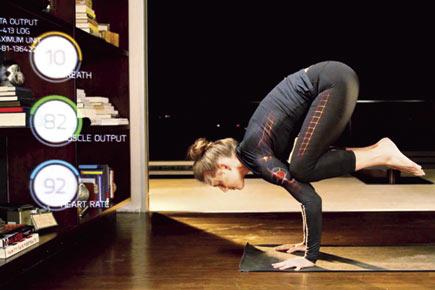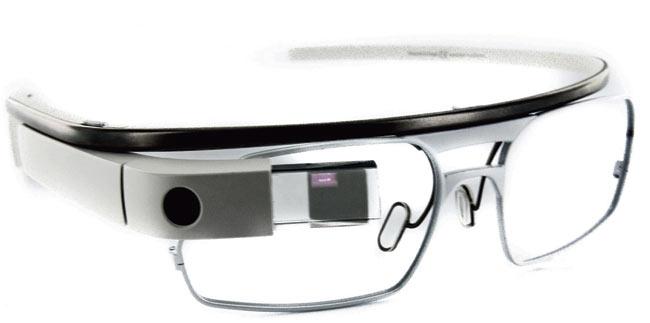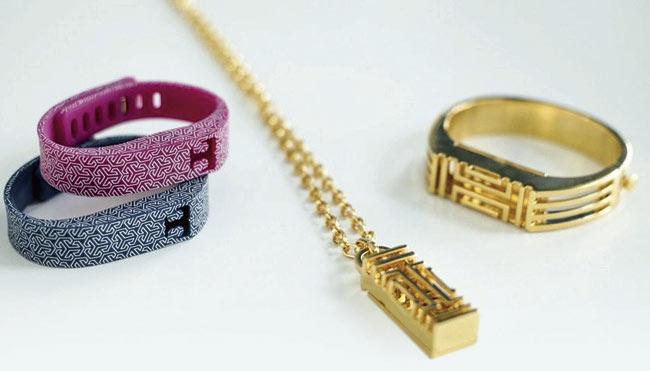Sooner, not later, your future is about to change. Take a look at these trendy, wearable gadgets that will let you get more out of every day

Like jewellery, technology, too, has become a part of our daily dressing style. We put on our clothes, shoes, rings on our fingers and the make-up. But in the near future, we will be all set to wear a full set of gadgets on our fingers, wrists, and even the eyes that not only monitor us throughout the day, but make our lives slightly easier.
ADVERTISEMENT
With more and more companies getting into the wearable gadget market, we are spoilt for choice. Some wearables are intelligent, some better-looking and some are simply the need of the hour. While researchers are busy finding new body parts to develop wearables for, designers have started concentrating on accessories to compliment these wearables.
The Modern Day Pedometer The Fitbit, Nike+FuelBand and many more like them, were nothing more than a modern day pedometer. Yes, they work with your cellphone and let you know how long you have exercised, but you had to wear them all the time, keep them charged, and then enter the data.
The first set of devices gave you feedback. While some of them looked cool, some did not, and while most of them are out of fashion now, they gave you a glimpse into what lies ahead. Here’s a list of some of the wearable gadgets one can look forward to. Some of them are available in India, but there are others that you will need to pick up when you’re on your next holiday abroad.
Athos gear (USD 390)
If you are someone who has been working hard to get those six pack abs, or someone who just likes to know whether that gym routine is really working, the Athos gear is science fiction come true.

It consists of a set of T-Shirt and shorts, with 26 EMG Sensors, 4 ECG Sensors and 2 Medical grade breathing sensors embedded in them, that conform to your body seamlessly.
Built directly into the fabric, they do not need to be replaced. Wrap-knit garments make sure that you have enough stability and double seam construction avoids chaffing. The company has been testing this product for quite some time and are looking at a shipping date towards the end of September this year.
Google Glass (USD 1,500)
A major problem with wearables is that you have to keep going back to their apps to manage them. This is where Google Glasses comes in.

No, it is not a fitness device, but it will help you look up any kind of information which can be about where you are, or commands about taking pictures of what you are looking at, or look up information you want, such as maps, calendar, or get that much-needed alert message from your doctor.
The Google Glasses are available only via a programme in the United States. Google, though, has opened it up for public sales a number of times, and is also on the verge of what would replace our prescription glasses, and be a wearable which is non-intrusive to the wearer.
Microsoft bra
The same Microsoft that brings you Windows, is also trying to do a lot in the wearable clothes area. Studies have shown that people tend to eat more when they are stressed and this starts the cycle of eating leading to weight gain, depression, and more eating.

Microsoft has come with a Smart Bra, filled with physiological sensors, capable of monitoring the wearers’ heart rate to track emotional distress. The bra then communicates with your smartphone, sending out alarms. This bra might not make it to the market anytime soon, but is definitely a right step towards preventing health disorders due to depression.
Tupelo mymo (price not available)
Tupelo is based out of Dubai and is trying to find a solution to the two major problems with fitness devices the need to charge them often and to back it up with real life coaches and people who monitor your activity. The Mymo changed this with a six months battery change.

If you have been doing your mandated 10,000 steps, but are yet to lose weight, the coaches will help you refine your programme. The coaches can also monitor whether a diabetic patient is getting his routine exercise or whether you are going on your walks which the doctor recommended after a cardiac surgery.
Tupelo has been talking to agencies that will provide this information and is looking at a roll out somewhere in Q3 of this year.
Sensoria Fitness socks (USD 149)
A pair of smart socks and a magnetic anklet that goes on them is what makes Sensoria wearable. The socks not only measure your steps and the distance you walked, but also tell you how your foot landed on the ground.

So, if you are looking at refining your running technique to get more out of your run, or just want to avoid injury in case you have been hitting your heel too hard on the ground, the Smartphone application will show you your pressure points and weight distribution when you run or walk, helping you improve your posture.
The socks are available in multiple colours, both for men and women, and don’t require any charging. The only device that requires charging is the anklet. You can even wash the socks in your regular washing machine. The Sensoria Socks are available for pre-order and will be available by the end of August this year, changing the way we run and walk.
Apple is said to release its wearable at the end of the year, and continues to hire people from medical backgrounds to work on the design. Tory Burch, a famous American Fashion designer has released her jewellery that encases a Fitbit module so that the wearable looks good.

The Korean Advanced Institute of Science is in the middle of research to make the next set of wearables function with just our body heat so that we don’t have to worry about charging them.
 Subscribe today by clicking the link and stay updated with the latest news!" Click here!
Subscribe today by clicking the link and stay updated with the latest news!" Click here!






